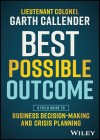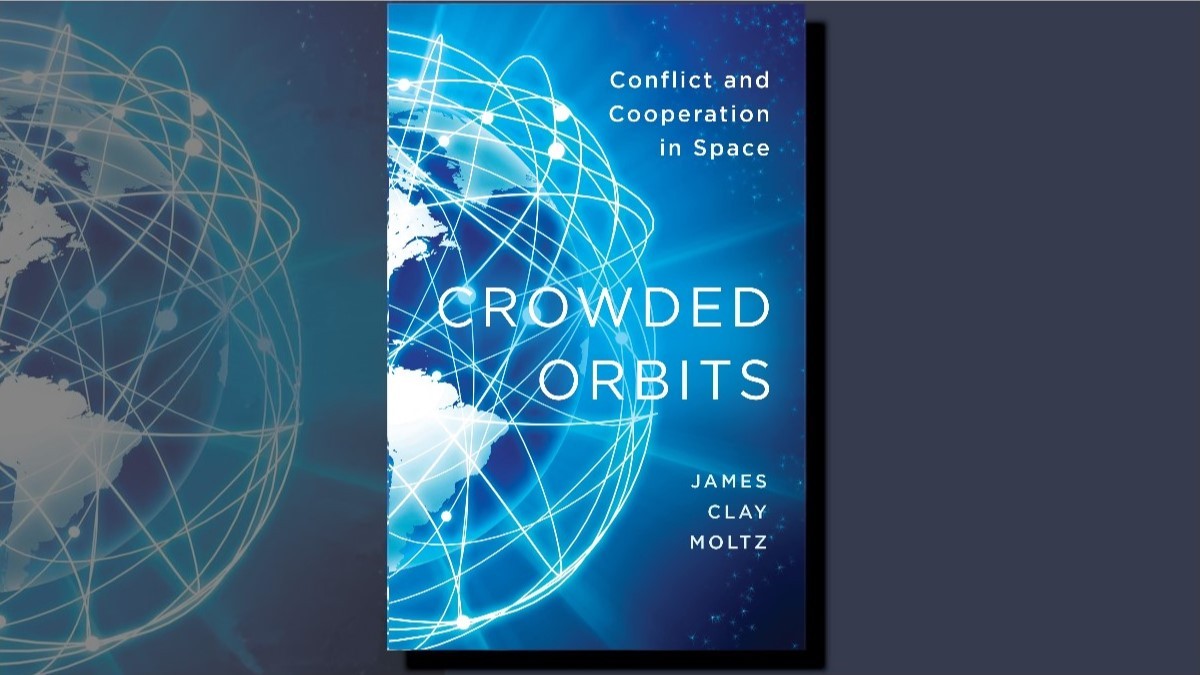Book Review - Best Possible Outcome
Business Decision-Making and Crisis Planning
by Garth Callender
Wiley, 2023, xxiv+186 pp
Paperback ISBN: 97813942033201
Reviewed by: Darren Cronshaw
Uncertainties and crises are a feature of contemporary global politics and business. In the face of conflict, extreme weather and natural disasters, cybercrime, pandemics, migration, and economic and supply chain instability, in what ways can leaders best lead through risk and chaos with agility and good decisions, while maintaining resilience for themselves and their teams? Drawing on his 25 years of service in the Australian Army, Lieutenant Colonel Garth Callender seeks to answer such questions and more in Best Possible Outcome.
Callender is a known figure for many in the Australian Army, having served as a cavalry officer in Iraq and in weapons intelligence teams in Afghanistan. His first book, After the Blast, described his recovery from an insurgent bomb attack in Baghdad in 2004, as the first serious Australian casualty of the war in Iraq. In Best Possible Outcomes he draws on both his Army career and his experience navigating governance and crises in his civilian work. In this regard, he has spearheaded veterans’ employment campaigns and contributed to boards, including chairing The Bravery Trust. Part of Callender’s motivation is to demonstrate that military members have skills relevant to the leadership and decision-making needs of civilian organisations. Thus he advocates for veterans to find and make worthwhile contributions within these professional spheres and writes about the military experiences and principles that any leader can draw on.
In effect, Callender’s book is a field guide for optimal decision-making and planning, drawing on and illustrated by Australian Army principles but applied to broader business contexts. It is structured around achieving the ‘best possible outcome’ (BPO) from the application of three conceptual pillars: the optimal mindset, the right team, and the BPO process.
Firstly, Callender underscores the importance of maintaining an optimal mindset in situations of crisis and ambiguity. He says that this is a characteristic epitomised by ‘the emergence of someone who comes into the room, cuts through the noise, aligns everyone’s thinking and starts stepping through a solution to the problem’.[1] People with such optimal mindsets lead, acknowledge the risks, apply ethical decision-making, focus and align the team, instinctively drive innovation, and control the narrative with clear and strong communication. These attributes are critical in life-and-death matters, for example when dealing with the risk of threats of improvised explosive devices (IEDs). An optimal mindset is equally necessary outside of the military context, for instance when dealing with ethical decision-making in the midst of morally ambiguous dilemmas. Helpfully, in his excellent Chapter 2 on ethics, Callender underlines that making the ‘right’ decision does not always mean following the ‘rules’. To illustrate this point, he uses the example of dilemmas concerning whether to fire warning shots at suspected vehicular-borne IEDs.
Secondly, Callender asserts that analysis is important for building professional teams. The cognitively diverse contributions of all team members should be welcomed, secrets should not be kept and information not withheld, and an understanding of the supervisor’s role needs to be maintained across the team. In the latter respect, Callender contends that business has a lot to learn from the military about succession planning. Mission plans should also be developed and stress-tested, and strategies put in place to support team members in the event of trauma. Callender maintains that we can train to react in predictable ways, but we all process events differently. For instance, a third of us may process a traumatic event quickly and move on, a third may take time to work through the incident before moving on, and a further third may struggle to process the event and will need long-term support. In Chapter 11, Callender discusses the importance of resilient teams and provides a scenario wherein a potentially morally injurious event occurs. His conclusion that good leaders acknowledge that different team members process events differently—and therefore need different levels of support—is well reasoned and the chapter should be required reading within any team-based environment.
Callender contends that we can learn from an enemy. In Chapter 10, ‘Stay Ahead of the Competition’, he shows how commanders and teams can respect and learn from the organisational structure, recruitment, agility, resilience, minimum possible training and growth of a threat force, such as the Taliban in Afghanistan. In emphasising his point, Callender asserts:
The IED threat from across Iraq and Afghanistan provides a myriad of examples of how an agile and adaptable enemy can outmanoeuvre a large, complex organisation, often with deadly consequences.[2]
Callender’s third pillar of optimal decision-making is the BPO process. BPO begins with preparing for uncertainty and conducting quick decision-making. This conceptual approach follows the framework outlined by United States Air Force pilot Colonel John R Boyd during the Korean war. This concept is known as the ‘observe, orient, decide and act’ loop (the OODA loop). Responding to crises effectively involves getting the right people in the room, holding frequent short meetings, and together identifying most-likely and worst-case scenarios. From this analysis, appropriate responses are developed that are then wargamed, actioned and later reviewed. Callender maintains:
In war zones, as in boardrooms, there is a simple truth: leaders must make clear, considered and timely decisions that cut through the ambiguity and chaos to best protect their organisation, people and stakeholders.[3]
Best Possible Outcome is an excellent and clearly written resource on clear thinking and agile leadership. It would be especially interesting reading for a military leader who is transitioning into civilian work, to remind them of the diverse and transferable leadership skillsets they have developed during their career. Military personnel are likely to be fully familiar with the principles of military decision-making that Callender outlines at a basic level for the broader audience. Yet both military and civilian readers will appreciate Callender’s insights as a reflective practitioner who is able to discuss lessons from his army background and apply them beyond military contexts. There are important lessons here for leaders across all spheres of professional practice in their efforts to tackle the wicked problems of today.
About the Reviewer
Chaplain Darren Cronshaw has served as a Chaplain at Army School of Transport, Puckapunyal; 1st Recruit Training Battalion, Kapooka; and Defence Force School of Signals. He is also adjunct as Professor of Practical and Intercultural Theology with the Australian College of Ministries (Sydney College of Divinity).



